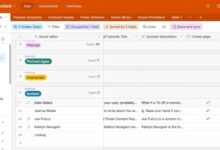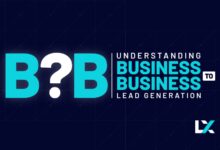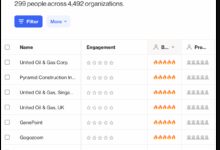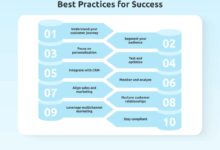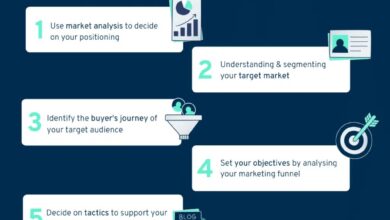B2B Advertising Platform: 7 Ultimate Power Tools for 2024
In today’s hyper-competitive digital landscape, choosing the right b2b advertising platform can make or break your growth strategy. With precision targeting, data-driven insights, and scalable solutions, these platforms are reshaping how businesses connect and convert.
What Is a B2B Advertising Platform and Why It Matters

A B2B advertising platform is a digital ecosystem designed to help businesses market their products or services to other businesses. Unlike B2C advertising, which often relies on emotional triggers and mass appeal, B2B advertising focuses on logic, ROI, long sales cycles, and decision-making committees. These platforms provide tools for targeting specific industries, job titles, company sizes, and even technographic data—making them indispensable for modern enterprise marketing.
Defining the Core Functionality
At its heart, a b2b advertising platform enables marketers to create, manage, optimize, and measure ad campaigns aimed at business audiences. This includes display ads, sponsored content, social media promotions (especially on LinkedIn), search engine marketing, and account-based advertising. The best platforms integrate with CRM systems like Salesforce and marketing automation tools such as HubSpot or Marketo, allowing seamless tracking from impression to conversion.
- Targeting based on firmographics (industry, revenue, employee count)
- Integration with lead scoring and nurturing workflows
- Advanced analytics for campaign performance and attribution
How B2B Differs from B2C Advertising
The fundamental difference lies in audience behavior. B2C decisions are often impulsive and individual, while B2B purchases involve multiple stakeholders, longer evaluation periods, and higher stakes. A b2b advertising platform must therefore support complex buyer journeys, nurture leads over time, and deliver highly relevant content at each stage of the funnel.
“B2B buyers are 57% through the decision-making process before they even engage with a sales rep.” — SiriusDecisions
This statistic underscores the importance of early-stage content visibility through strategic advertising on platforms where professionals research solutions—like LinkedIn, Google Search, and industry-specific portals.
Top 7 B2B Advertising Platforms Dominating 2024
The market for b2b advertising platform solutions has exploded in recent years, driven by demand for more precise targeting, better ROI measurement, and integration with sales tech stacks. Below are seven of the most powerful and widely adopted platforms in 2024, each offering unique strengths for different business models and objectives.
1. LinkedIn Ads – The Gold Standard for Professional Targeting
As the world’s largest professional network, LinkedIn remains the undisputed leader in B2B advertising. Its granular targeting options allow marketers to reach users by job title, function, seniority, company name, industry, and even groups they belong to. With over 900 million members globally, LinkedIn offers unparalleled access to decision-makers.
- Sponsored Content: Appears natively in users’ feeds
- Message Ads: Direct InMail messages to targeted prospects
- Text Ads: Cost-effective CPC/CPM options for broad reach
LinkedIn’s integration with LinkedIn Campaign Manager provides robust analytics, A/B testing, and conversion tracking. For companies selling enterprise software, consulting services, or HR tech, LinkedIn is often the first stop in any b2b advertising platform strategy.
2. Google Ads – Leveraging Intent-Based Search
While Google is often associated with B2C, its role in B2B cannot be overstated. Google Ads excels at capturing high-intent traffic—users actively searching for solutions like “CRM for small business” or “cloud cybersecurity tools.” This makes it one of the most effective b2b advertising platform options for demand capture.
- Search Network: Target keywords related to pain points and solutions
- Display Network: Retarget visitors with visual banners across websites
- YouTube Ads: Use video to explain complex products or case studies
Google’s Google Ads platform also supports audience targeting via remarketing lists, in-market segments, and custom intent audiences—allowing marketers to reach users researching specific technologies or services.
3. Meta Ads (Facebook & Instagram) – Niche B2B Opportunities
Though not traditionally seen as B2B channels, Facebook and Instagram have carved out niches for certain types of B2B marketing. Industries like SaaS for creatives, e-commerce tools, freelancing platforms, and digital education have found success using Meta’s powerful ad engine.
- Lookalike Audiences: Build audiences similar to existing customers
- Lead Ads: Collect contact info without leaving the app
- Video Engagement: Showcase product demos and testimonials
Meta’s pixel-based tracking and conversion API enable deep integration with CRMs, making it viable for lead generation when combined with strong landing pages and lead magnets. However, targeting precision is lower than LinkedIn, so it works best when layered into a broader b2b advertising platform mix.
4. Amazon Advertising – Emerging Force in B2B E-commerce
Amazon Business, launched in 2015, now serves over 10 million businesses worldwide. This has opened up a new frontier for B2B advertisers selling physical products—from industrial equipment to office supplies. Amazon’s advertising platform allows brands to run sponsored product ads, display ads, and video ads directly within the Amazon ecosystem.
- Sponsored Products: Appear in search results and product detail pages
- Brand Stores: Create immersive brand experiences
- Audience Targeting: Reach business buyers based on purchasing behavior
With Amazon’s self-service ad platform, even mid-sized suppliers can compete for visibility. The advantage? Buyers are already in purchase mode, reducing friction in the sales cycle. For manufacturers and distributors, Amazon is rapidly becoming a critical component of any b2b advertising platform strategy.
5. Programmatic Platforms (The Trade Desk, Xandr, StackAdapt)
Programmatic advertising uses AI and real-time bidding to automate ad buying across thousands of websites, apps, and video platforms. For B2B marketers, this opens the door to contextual and audience-based targeting at scale. Platforms like The Trade Desk and StackAdapt allow you to target users visiting business news sites, tech blogs, or financial portals.
- Contextual Targeting: Place ads on pages about AI, cloud computing, etc.
- IP Targeting: Serve ads to specific company locations
- Cross-Device Reach: Follow decision-makers across devices
One of the most advanced features is Account-Based Marketing (ABM) through programmatic. By uploading a list of target accounts, platforms can serve personalized ads to everyone within those organizations—creating a “digital billboarding” effect that reinforces brand presence during the evaluation phase.
6. YouTube Ads – The Power of Visual Storytelling
YouTube isn’t just for entertainment. It’s the second-largest search engine and a go-to resource for professionals researching solutions. From “how-to” tutorials to product comparisons, B2B buyers spend significant time on YouTube before making decisions.
- Skippable In-Stream Ads: Reach viewers before or during videos
- Bumper Ads: 6-second non-skippable messages for brand recall
- Discovery Ads: Appear in search results and next-to-video suggestions
For complex products—like enterprise software, medical devices, or engineering tools—video ads can simplify messaging and build trust. When integrated into a larger b2b advertising platform strategy, YouTube enhances top-of-funnel awareness and supports middle-funnel consideration.
7. Industry-Specific Platforms (e.g., AdWeek, TechCrunch, G2)
Niche platforms serve highly specialized audiences and offer premium placement opportunities. For example, advertising on G2 allows SaaS companies to appear directly in front of users comparing tools like CRMs or project management software.
- G2 Ads: Target buyers actively evaluating software
- AdWeek Native Ads: Reach marketing executives and agency leaders
- TechCrunch Sponsorships: Gain visibility among startups and investors
These platforms may have smaller reach but deliver higher intent and conversion rates. They’re especially effective when used in conjunction with broader campaigns on LinkedIn or Google, forming a multi-touch b2b advertising platform approach.
Key Features to Look for in a B2B Advertising Platform
Not all b2b advertising platform solutions are created equal. To maximize ROI, marketers must evaluate platforms based on several critical criteria. These features determine not only campaign effectiveness but also long-term scalability and integration with existing systems.
Precision Targeting Capabilities
The hallmark of a strong b2b advertising platform is its ability to drill down into specific audience segments. Ideal targeting options include:
- Firmographics: Industry, company size, revenue, location
- Technographics: Technologies used (e.g., Salesforce, AWS, Shopify)
- Job Titles & Seniority: C-suite, managers, IT admins, etc.
- Intent Data: Signals indicating active research (via third-party providers)
Platforms like LinkedIn and The Trade Desk lead in this area, offering layered targeting that combines multiple data points for hyper-relevance.
Integration with Sales and Marketing Tech Stack
A standalone ad platform is only as good as its ability to connect with your CRM, marketing automation, and analytics tools. Look for native integrations or API access to systems like:
- Salesforce
- HubSpot
- Marketo
- Google Analytics 4
- Segment or Zapier for custom workflows
Seamless integration ensures that leads generated from ads are automatically routed, scored, and nurtured—closing the loop between marketing spend and revenue outcomes.
Advanced Analytics and Attribution Modeling
Understanding which ads drive conversions is essential. A mature b2b advertising platform should offer multi-touch attribution, allowing you to see how different channels contribute to a sale. Features to look for include:
- Conversion tracking pixels
- UTM parameter support
- Custom reporting dashboards
- ROI and CAC (Customer Acquisition Cost) calculators
Google Ads and LinkedIn Campaign Manager both offer detailed reporting, but third-party tools like Bizible or Dreamdata can provide even deeper insights across platforms.
How to Build a Winning B2B Advertising Strategy
Choosing the right b2b advertising platform is just the beginning. To achieve sustainable growth, you need a cohesive strategy that aligns with your business goals, buyer personas, and sales cycle. Here’s how to build one that delivers results.
Define Clear Objectives and KPIs
Before launching any campaign, clarify what success looks like. Common B2B advertising objectives include:
- Lead Generation: Measured by form fills, demo requests, or content downloads
- Brand Awareness: Tracked via impressions, reach, and engagement
- Account Penetration: Focused on engaging multiple stakeholders in target accounts
- Event Registrations: Driving attendance to webinars or trade shows
Each objective requires different platforms, creatives, and measurement frameworks. For example, LinkedIn excels at lead gen, while YouTube is better for awareness.
Map Ads to the Buyer’s Journey
B2B buyers go through three main stages: awareness, consideration, and decision. Your b2b advertising platform strategy should deliver tailored messaging at each phase.
- Awareness: Use educational content (e.g., “What is AI automation?”) on YouTube, Google Display, or LinkedIn
- Consideration: Promote comparison guides, case studies, or free trials via Sponsored Content or Google Search
- Decision: Retarget high-intent users with demo offers, pricing pages, or customer testimonials
This journey-based approach ensures that your advertising budget is spent efficiently, nurturing prospects rather than pushing premature sales messages.
Leverage Account-Based Marketing (ABM)
ABM is one of the most powerful applications of a b2b advertising platform. Instead of targeting broad audiences, ABM focuses on high-value accounts—using personalized ads, emails, and landing pages to engage key stakeholders.
- Identify target accounts using CRM data or intent signals
- Create custom ad creatives for each account or industry
- Use IP targeting or LinkedIn Matched Audiences to serve ads
- Coordinate with sales teams for synchronized outreach
“Companies using ABM report 171% higher YoY revenue growth than those that don’t.” — ITSMA
Platforms like Terminus, 6sense, and Demandbase specialize in ABM advertising, but LinkedIn and programmatic tools can also be configured for this purpose.
Measuring Success: KPIs and ROI in B2B Advertising
Unlike B2C, where conversions happen quickly, B2B advertising often requires patience. A single deal might take months to close, making it crucial to track both short-term and long-term metrics.
Essential B2B Advertising KPIs
To evaluate the performance of your b2b advertising platform campaigns, monitor these key indicators:
- Cost Per Lead (CPL): Total ad spend divided by number of leads
- Click-Through Rate (CTR): Percentage of users who click on your ad
- Conversion Rate: Percentage of clicks that result in a desired action
- Customer Acquisition Cost (CAC): Total marketing cost per new customer
- Return on Ad Spend (ROAS): Revenue generated per dollar spent
- Engagement Rate: Likes, shares, comments—especially on LinkedIn
While CPL and CTR are useful for optimization, CAC and ROAS are the ultimate measures of profitability.
Attribution Models for Complex Sales Cycles
Because B2B buyers interact with multiple touchpoints before converting, last-click attribution often undervalues early-stage advertising. Consider using:
- Linear Model: Credits all touchpoints equally
- Time Decay: Gives more weight to interactions closer to conversion
- Position-Based: 40% credit to first and last touch, 20% distributed in between
- Algorithmic/Custom: Uses machine learning to assign credit (offered by tools like Google Analytics 4)
Choosing the right model helps justify continued investment in top-of-funnel b2b advertising platform activities.
Common Pitfalls to Avoid in B2B Advertising
Even experienced marketers can fall into traps when running b2b advertising platform campaigns. Being aware of these common mistakes can save time, budget, and reputation.
Poor Audience Targeting
One of the biggest errors is casting too wide a net. Sending generic messages to broad audiences leads to low engagement and wasted spend. Always refine your targeting using firmographics, intent data, and exclusion lists.
For example, if you’re selling enterprise cybersecurity software, don’t target all IT professionals—focus on CISOs and security managers in companies with 500+ employees.
Ignoring Ad Creative and Messaging
Even the best-targeted ad will fail if the creative doesn’t resonate. B2B buyers respond to clarity, credibility, and value propositions—not flashy slogans. Avoid jargon and focus on outcomes: “Reduce cloud costs by 30%” is better than “Next-gen optimization platform.”
- Use professional imagery and clean design
- Highlight social proof (e.g., “Used by 5,000+ companies”)
- Include a clear call-to-action (CTA)
Failing to Test and Optimize
Many campaigns are set up and forgotten. But a successful b2b advertising platform strategy requires continuous testing. Run A/B tests on:
- Ad copy (benefit-driven vs. feature-focused)
- Headlines and CTAs
- Landing page designs
- Target audience segments
Use the data to refine your approach and improve performance over time.
Future Trends Shaping B2B Advertising Platforms
The b2b advertising platform landscape is evolving rapidly due to technological advancements, privacy changes, and shifting buyer behaviors. Staying ahead of these trends will give your business a competitive edge.
Rise of AI and Predictive Targeting
Artificial intelligence is transforming how platforms identify and engage prospects. AI-powered tools can analyze vast datasets to predict which accounts are most likely to buy, recommend optimal bid strategies, and even generate ad copy.
- Predictive lead scoring
- Dynamic creative optimization (DCO)
- Automated budget allocation
Platforms like 6sense and Albert.ai are already leveraging AI to enhance B2B ad performance.
Privacy-First Advertising in a Cookieless World
With Google phasing out third-party cookies by 2024, b2b advertising platform providers are adapting. The future lies in first-party data, contextual targeting, and identity resolution solutions.
- Increased reliance on email-based targeting (e.g., LinkedIn Matched Audiences)
- Growth of clean rooms and data collaboration platforms
- Stronger emphasis on consent and transparency
Marketers must invest in building owned audiences and leveraging authenticated traffic to maintain targeting precision.
Integration of Commerce and Content
B2B buyers increasingly expect Amazon-like purchasing experiences. Platforms are responding by embedding commerce capabilities into content environments. For example, G2 now allows direct software trials from ad units, and LinkedIn is testing lead-to-order workflows.
This convergence of content, advertising, and commerce will reduce friction and shorten sales cycles—making the b2b advertising platform not just a discovery tool, but a direct sales channel.
What is a b2b advertising platform?
A b2b advertising platform is a digital service that enables businesses to run targeted ad campaigns aimed at other businesses. These platforms use data such as job titles, company size, and industry to deliver ads to professional audiences across channels like LinkedIn, Google, and programmatic networks.
Which b2b advertising platform is best for lead generation?
LinkedIn Ads is widely regarded as the most effective b2b advertising platform for lead generation due to its professional user base and precise targeting options. When combined with lead gen forms and CRM integration, it delivers high-quality B2B leads at scale.
How much does it cost to run ads on a b2b advertising platform?
Costs vary widely. LinkedIn Ads average $5–$10+ per click, Google Ads range from $1–$5 for B2B keywords, and programmatic ads can cost $10–$25 CPM. Budgets should be aligned with campaign goals, with most B2B companies spending $5,000–$50,000+ per month on major platforms.
Can small businesses use b2b advertising platforms effectively?
Yes. While some platforms have high minimum spends, others like Google Ads and Meta Ads offer flexible budgets. Small businesses can succeed by focusing on niche audiences, using precise targeting, and creating high-value content offers to generate leads.
How do I measure ROI from a b2b advertising platform?
Track metrics like Cost Per Lead (CPL), Customer Acquisition Cost (CAC), and Return on Ad Spend (ROAS). Integrate your ad platform with CRM and marketing automation tools to attribute revenue to specific campaigns and calculate long-term ROI accurately.
Choosing the right b2b advertising platform is no longer optional—it’s a strategic imperative. From LinkedIn and Google to programmatic and niche industry portals, these tools empower businesses to reach decision-makers with precision, build brand authority, and drive measurable revenue growth. By understanding platform strengths, aligning with buyer journeys, avoiding common pitfalls, and embracing emerging trends like AI and privacy-first targeting, marketers can unlock the full potential of B2B digital advertising. The future belongs to those who combine data, creativity, and technology to deliver value at every stage of the customer journey.
Further Reading:

